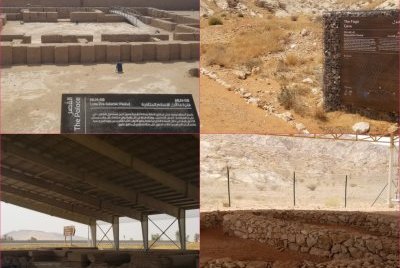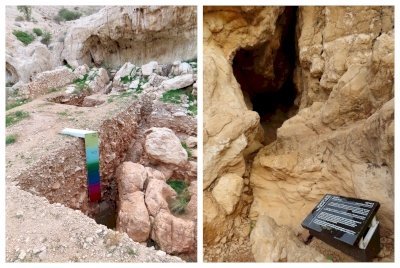United Arab Emirates
Faya Palaeolandscape
The Faya Palaeolandscape comprises an archaeological site from the Stone Age in a desert landscape. Its periodic occupation shows how humans adapted to extreme climatic conditions. The oldest archaeological layer dates back approximately 210,000 years.
Community Perspective: Head for Mleiha Archeology Center and you will be taken on a pricey guided tour by car along the excavations.
Site Info
Official Information
- Full Name
- Faya Palaeolandscape (ID: 6653)
- Country
- United Arab Emirates
- Status
-
Nominated 2025
Site history
History of Faya Palaeolandscape
- 2023: Added to Tentative List
- Added to tentative list
- Criteria
- iii
- iv
Links
- UNESCO
- whc.unesco.org
All Links
UNESCO.org
- whc.unesco.org — whc.unesco.org
Community Information
- Community Category
- Archaeological site: Prehistoric
Travel Information
Recent Connections
News
No news.
Community Reviews
Show full reviews
You'll be heading for the Mleiha Archeology Center for this one which I visited twice in the last few years. First was a bit of a bust. They had lots of activities for Wadi Bashing and no tours ready to take me out so I visited the museum only which is not bad in any way but the main findings are out in the open. So since my visit 3 years ago the bashing got outlawed, new findings made some signs outdated and hardly anyone comes out here anymore. You'll be asking for a tour and they just arrange with available staff.
I left after lunch with the option to view the museum but I had already reglanced that I didn't find it necessary. It's included and the staff is happy you go in, watching the camel/horse burial etc. For the actual tour you nowadays fork out at least 130 DH per person.
The tour is via a car because it's so hot. You first go to the ancient sites in the West and then cross over to the new ones at the East side. Those are so fresh that even a road planned to go through here was remodeled when they discovered artifacts. The East is maybe 10 years old and they still have a lot to find. You also won't see much at the site here but some basic layouts. The floods in April 2024 took their toll and most of the walls are now destroyed. …
Keep reading 0 comments
I have little experience in visiting prehistory landscapes such as this and therefore I was grateful for our tour guide. We hiked starting from the remnants of a spring that was used by humans over many thousands of years. From here we hiked the gently incline toward the caves. Because of recent rains before our visit, much of of the desert landscape was partially green with new plant growth. The caves were in fact human occupation sites and excavations have been carried out to confirm how these caves were used throughout the millennia of the Paleolithic era. During this short hike (about 30-45 minutes) with stops, you will see 3 caves and some pleasant views, one of the caves is possible to enter, though it's a tight fit.
A short drive from this site is where some of the most surprising and exciting discoveries have been made, almost exclusively in the last 5-10 years. At this location is a partially dug out pit where you can see the stratified layers, which benefit from a color coded measurement [pictured] that dates the site to over 200,000 years of mostly continuous human presence and adaption to the landscape. The guide explained some of the new discoveries, which are being published so often now that the information on site has to be updated frequently. A lucky bonus for us, our guide was a passionate "birder" and he was well aware of an owl that frequents this site and soon we heard its …
Keep reading 0 comments